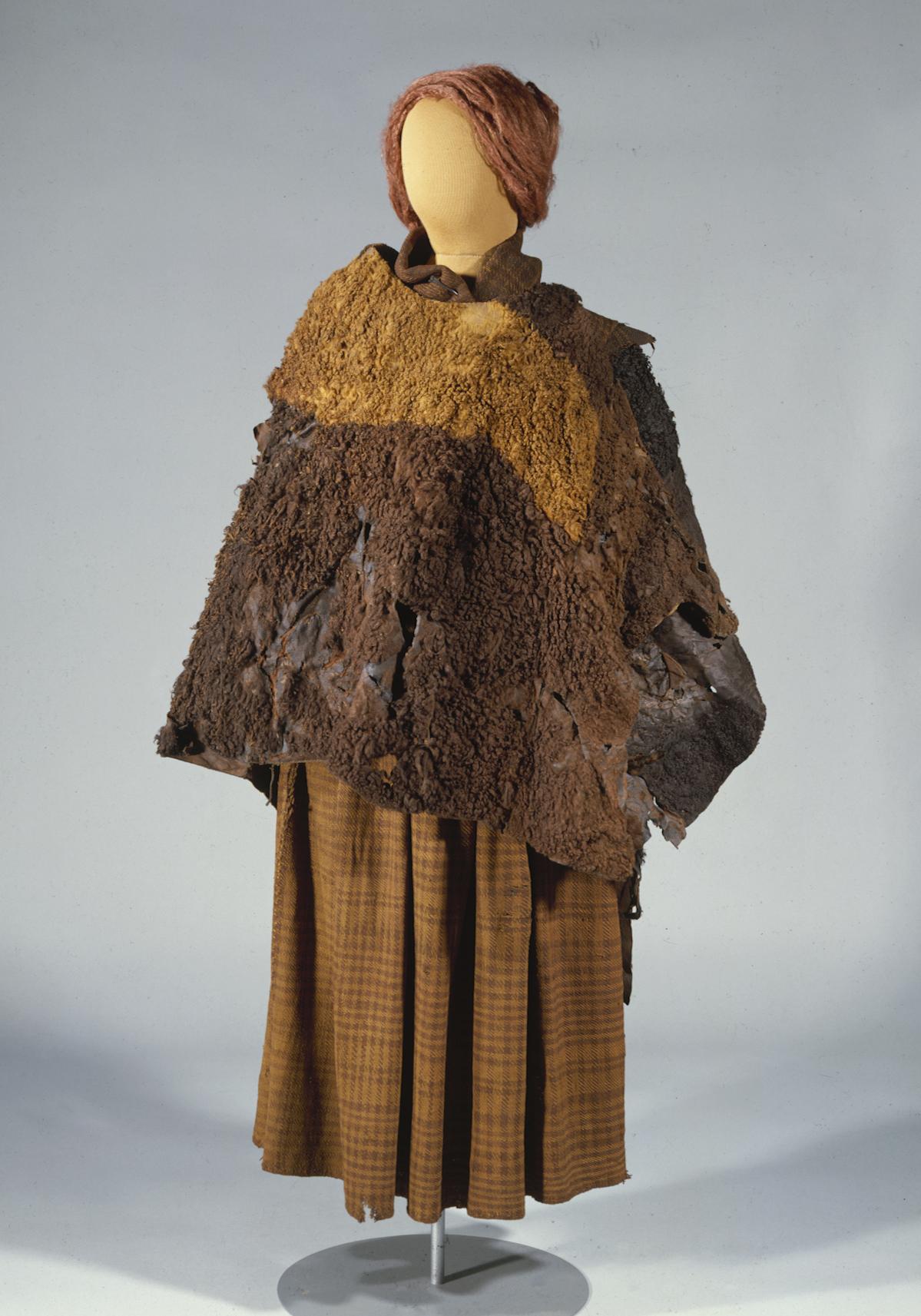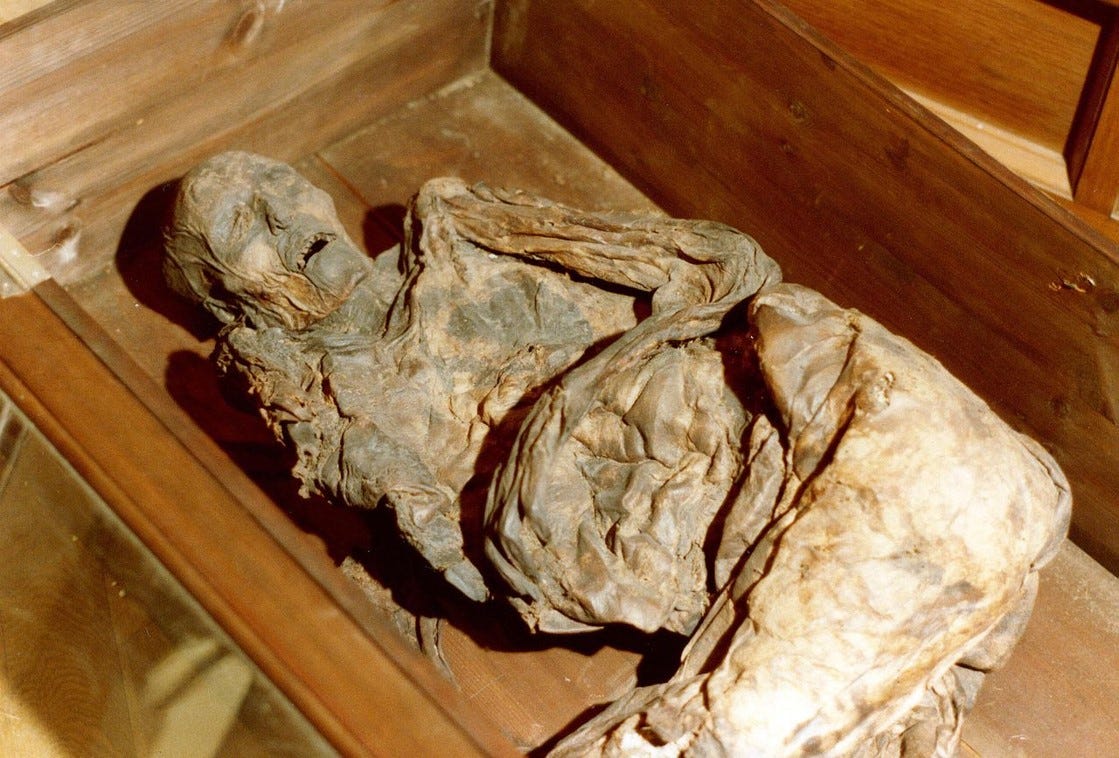Discovery and Dating
In 1879, the remarkably preserved body of a woman was discovered in a peat bog in Jutland, Denmark. Known today as the Huldremose Woman, she dates from between 160 BCE and 340 CE, spanning the late Iron Age to early Roman influence in Northern Europe. The acidic and anaerobic conditions of the bog preserved her skin, hair, and even traces of brain tissue, making this one of the most important bog body finds ever recorded.

Clothing and Personal Artifacts
What sets the Huldremose Woman apart from most other bog bodies is her elaborate clothing. While many other bog mummies were found naked or loosely wrapped in cloaks, she was fully dressed. She wore a sleeveless cape made from lambskin, a short plaid woolen skirt, and a headscarf. Near her body, archaeologists found a horn comb and a cord adorned with two amber beads. The complexity and quality of these items suggest she belonged to a higher social class and may have held an important role within her community.
Signs of Injury and Cause of Death
Physical examination revealed that her leg had been broken but had healed prior to death, indicating she survived the injury long enough for recovery. More curiously, her right arm was severed, though it remains uncertain whether this happened before or after death. These injuries have led scholars to propose various theories, ranging from ritual sacrifice to ceremonial burial or punishment. However, the care given to her clothing and burial suggests reverence rather than violence alone.

Last Meal and Lifestyle Clues
Analysis of her stomach contents revealed that her final meal consisted of rye bread, a staple in the Iron Age diet. This simple yet nourishing food provides a glimpse into the daily life and subsistence of people during that time. Her choice of food, combined with her appearance, indicates she lived in a society that had access to both basic agricultural products and crafted luxury items like amber jewelry.
Cultural and Archaeological Significance
The Huldremose Woman offers unique insight into Iron Age society in Northern Europe, particularly in regard to burial practices, textile craftsmanship, and social hierarchy. In contrast to other famous bog bodies such as Tollund Man or Grauballe Man—often interpreted as ritual sacrifices—the Huldremose Woman presents a more complex narrative. Her burial may have been ceremonial, and her attire indicates a possible role of prestige or spiritual importance.
Legacy
Today, the Huldremose Woman is housed at the National Museum of Denmark in Copenhagen, where she continues to fascinate scholars and visitors alike. Her story is not only a window into the distant past but also a testament to how peat bogs can preserve the most human details of ancient lives—clothing, expressions, and even meals—across thousands of years.

